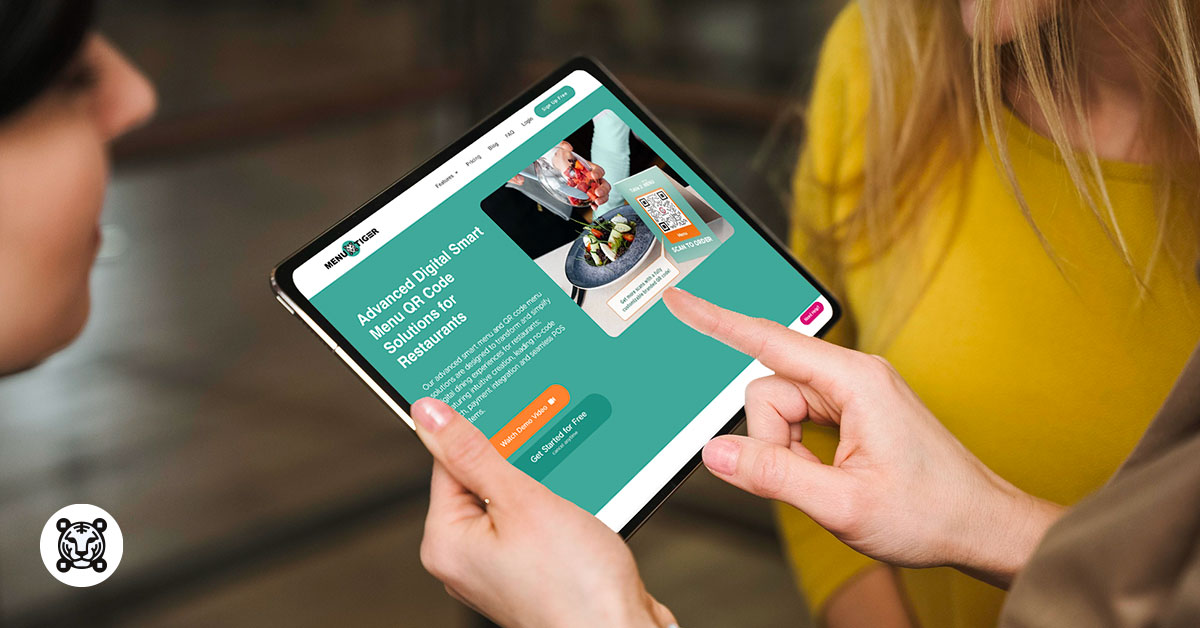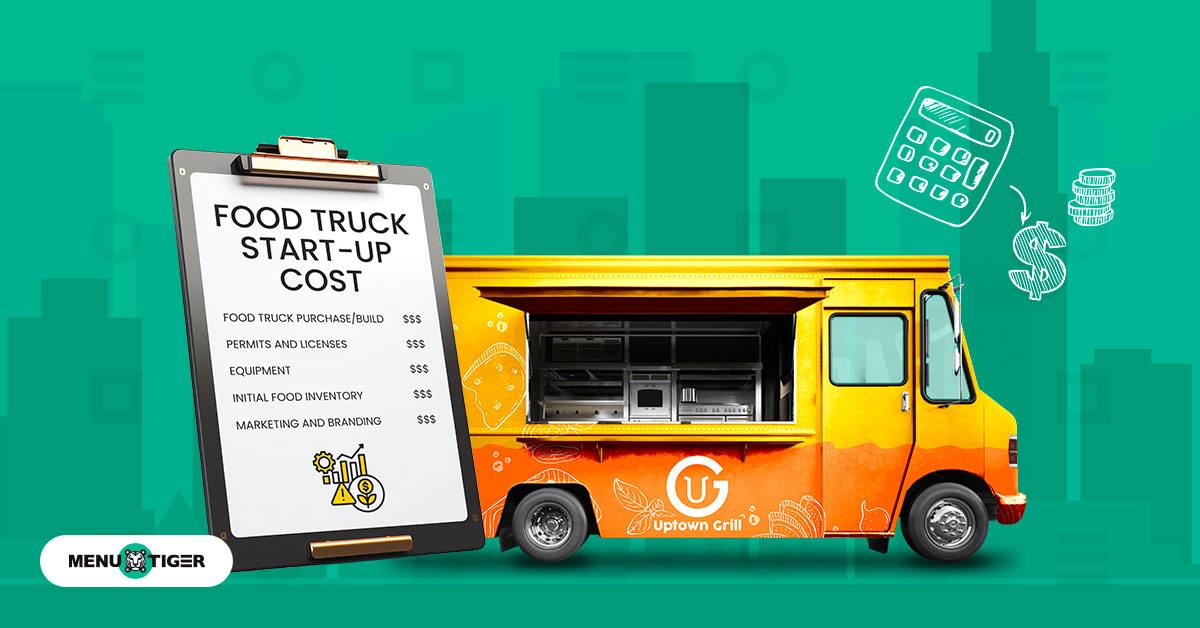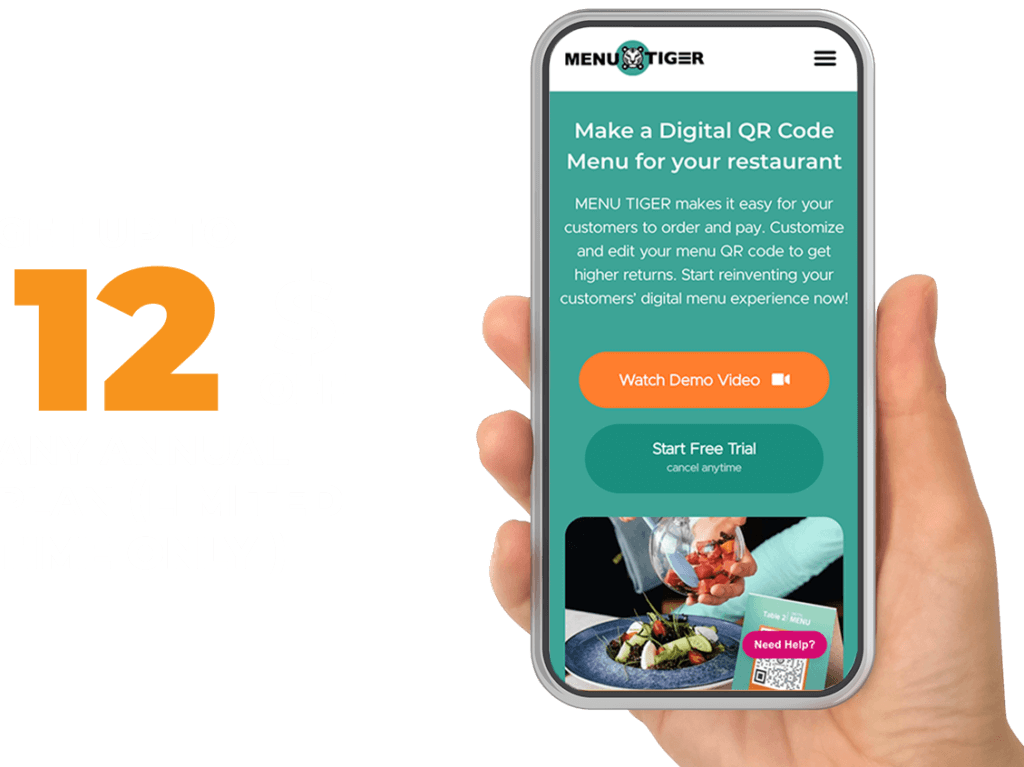If you have the entrepreneurial itch to start a food business or have a mobile extension of your brick-and-mortar restaurant, a food truck is a good starting point.
According to CO by the U.S. Chamber of Commerce, a digital platform for small businesses, the average food truck startup costs would total $55,000, which is pretty low since it already covers permits and licenses to operate.
But this can still change depending on the rules and regulations implemented, especially in California and additional pieces of equipment and technologies like QR code menu software, refrigerators, kitchen devices, and more.
To help you prepare for this, here’s a comprehensive guide for your financial planning.
Table of Contents
ToggleOn data: Food truck businesses in California
According to a food truck industry report by IBISWorld, a trusted industry research provider, there are 833 food trucks in California, 744 in Texas, and 725 in Florida as of 2023.
In total, there are around 47,000 food truck businesses in the United States, which are seemingly increasing by 15.8% since 2022.
This data implies the growing popularity of mobile kitchens in the US because it’s a great avenue for first-time entrepreneurs to experiment in the business before investing in establishing an on-site restaurant.
But it does not mean you’d care less about the cost that comes with it.
While food trucks generally have lower operating expenses than traditional restaurants, understanding the average food truck income can help you set realistic financial expectations and plan for profitability.
Food truck startup costs checklist you need to have

In any business, you have to have a list of things for where you’ll spend your money.
Though the food truck business is less expensive compared to having a built restaurant, costs can still add up quickly.
That is when financial planning comes in to help you determine how much you need to prepare to achieve your business goal.
To start with that, here’s a checklist for your reference:
Getting a truck
How much does a food truck cost? You may ask.
The cost of a vehicle still varies depending on the type and condition of what you’re planning to get.
According to Thimble, a business insurance company, a customized food truck in California with bells and whistles can cost up to $300,000, while a used box truck without modifications costs around $30,000.
If you opt to lease, it can range between $3,000 to $4,500 a month, including the commissioned kitchen.
Purchasing kitchen supplies and equipment
You need to furnish your truck with the necessary supplies and equipment to make it functional.
Create a food truck menu and concept first to determine what things you need to operate.
If you’re still in the process, you’ll most likely use fryers, grills, ovens, and refrigerators. And you have your utensils such as pots, pans, containers, knives, ladles, etc.
Expect to spend around $20,000 at minimum.
Stocking up initial inventory and supplies
Your budget for this depends on the menu you will offer and how you will serve them.
So, expect to spend on ingredients, napkins, packaging, menu boards, and other supplies needed for you to operate.
Gathering permits and licenses
A 2023 food truck statistic by Zippia, a career assistance provider, indicated it costs around $30,000 on average to get the permits and licenses required to open a food truck.
In California, there are several required permits, certificates, and licenses that you need to get before you can fully operate, which can add up to your start-up cost.
Here are some of them you’re going to purchase:
- Business License
You’ll need this in each city to take your truck to several locations. You can apply online but must submit the completed forms in person.
The fees can vary between $50-$100 for every municipality and county.
- Seller’s Permit
This permit is for tangible goods subject to sales tax.
But if you’re selling food prepared by someone else, you should get a reseller’s permit, which allows you to buy wholesale without paying sales tax.
The California Department of Tax and Free Administration provides free online registration for these documents.
- Food Safety Manager Certification
In California law, all facilities that prepare and handle food or serve unpacked food must acquire a Certified Food Manager (CFM) by passing an American National Standard Institute (ANSI) accredited exam.
This certificate entails the knowledge of the person in charge of the business about food safety handling practices.
You can get this through different programs like California Food Safety Training—a food safety courses provider—for $100.
- Food handler’s permit
A CA food handler card or permit is also required under the California Retail Food Code, which establishes the requirements for food safety, hygiene, cleaning and sanitizing the equipment and tools used, food storage, and other facilities.
If you have employees, they must obtain this card within thirty days of hire by completing a 90-minute training course and passing the exam with a minimum requirement of 70%.
Depending on the provider, this will be offered online for about $10 minimum.
- Mobile food facility permit
Mobile food vehicles may be classified as “commercial modular” by the California Department of Housing and Community Development.
This can cost up from $300 to $500.
- Commercial Kitchen
In California, food cart operators must collaborate with a commercial kitchen that holds a license.
You must rent or lease a commissary kitchen where you can keep supplies and prepare if you don’t have a physical kitchen.
On average, this can cost you up to $1000 per month.
- Vehicle license
Because your business runs in a vehicle, it’s expected that you’ll also need a driver’s license and registration to operate a truck.
Depending on the size of your vehicle, an estimated price would go from $75 to $150.
- Permanent parking certificate
When not in service, food trucks in California are required by law to be parked at a specific food facility.
Parking is sometimes included in the monthly rental fee for commissary kitchens.
- Fire certificate
You may need a fire department inspection since you’ll cook in your mobile kitchen.
Apply for a fire safety permit and have an inspection to ensure that you’re not causing hazards.
Investing in technologies
Expect to invest in technologies like the Internet of Things ( IoT ) appliances, smart kiosks, and restaurant software and systems that can help you in your management and operations.
You just have to choose which one you can benefit from in the long run. For food truck businesses, it’s good to have software that provides numerous features, making your workflow manageable.
Say you want digital menus instead of the traditional ones to streamline your ordering process and eliminate stacking up printed sheets of paper. This can be done through a QR code menu like MENU TIGER.
It also offers additional functionalities, such as order analytics, email campaigns, a website builder, and more, at a very affordable price.
5 things to avoid doing when budgeting for your food truck startup costs

Now that you have the preliminary expenses you need to put your money on, here is what you need to avoid doing in your budgeting phase for your mobile kitchen.
Underestimating expenses
Avoid the mistake of underestimating your start-up costs.
Factor in all potential expenses, including permits, equipment, vehicle customization, and operating costs.
This will save you from overspending on things and services you don’t need now.
Also, it’s better to have an estimated amount to spend than to be caught off guard by unexpected expenses.
Ignoring contingencies
Don’t forget to include a contingency or emergency fund in your budget.
Emergencies can arise, so having a buffer will help you handle unforeseen circumstances without derailing your business.
Tip: To determine how much you will set aside, determine the total cost of your operating expenses in thirty days and multiply it by the desired number of months you want to cover.
Neglecting market research
Doing your market research is a primordial step when entering business.
This will give you valuable information about your target market, competition, and demand for your food truck concept.
With sufficient data, you’ll be able to determine the strategies you will apply from pricing to your marketing efforts.
Failing to plan for seasonality
Don’t overlook the impact of seasonality on your business.
Consider how weather, holidays, and local events affect your sales, and adjust your budget accordingly.
Planning for possible fluctuations in revenue will help you maintain financial stability throughout the year.
Ignoring maintenance and upkeep costs
Regular maintenance of your food truck equipment, especially the vehicle you’re using, is crucial to keep the functionality of its highest quality.
Failing to budget for these expenses can lead to unexpected breakdowns and costly repairs.

Tips on how to cut down your food truck expenses

When making your way to business, you might tend to get overwhelmed by the things you need to prepare.
Sometimes, you have to spend on tools or services that may not seem important but help you massively with your customer service.
To help you with this, here are tips that you can apply when planning for your finances:
Monitor and analyze costs
Cutting food truck expenses involves regularly tracking and scrutinizing all costs incurred in the operation.
Have a list of ingredient prices, vehicle maintenance, overhead expenses, and employee wages.
This will help you make informed decisions, allowing adjustments in your procurement strategies, pricing, menu offerings, and operational processes to maximize your business’s profitability and sustainability in the long run.
Optimize menu selection
Focus on offering popular menu items that are easy to prepare and secure high-profit margins.
To do this, ensure that you have already conducted your market research on your menu ideas as part of the preliminary steps in your food truck business plan document.
Analyze the data you’ve gathered to identify the most popular food among your target customers.
Consider the ingredient cost, preparation time, and customer demographics when deciding.
This reduces your overall expenses on food since you’ll need to prepare items that guarantee a sale.
Source ingredients wisely
Look for local farmers and producers to source fresh seasonal and non-seasonal ingredients directly.
By cutting out middlemen in the process, you can often negotiate better prices and access a wider variety of products.
If you’re located in areas with food distribution centers, you can take advantage of the wholesale price of your raw materials. They’re much cheaper than those being put out in big establishments.
Negotiate with suppliers
Be keen to partner with suppliers of your ingredients.
Here, keeping your lines open for communication with them is crucial. Be specific about what you need to be delivered, including the quantity and quality of ingredients you require and the due dates for delivery.
But don’t forget that you must also consider and listen to their expertise and create a mutually beneficial agreement.
Be open and honest about your requirements and any challenges, especially when their supply costs go beyond your budget. Make recommendations for changes that you could meet halfway.
This is essential to reduce food waste in restaurants and food truck businesses under your management.
Invest in energy-efficient appliances and equipment
It’s a wise choice to set aside a budget for appliances and equipment that guarantees quality performance and, at the same time, saves you a hefty amount.
When you purchase these, prioritize models with high energy efficiency ratings. Look for features that reduce energy consumption, such as programmable settings, LED lights, and insulated compartments.
Take note that these appliances and equipment are American National Standard Institute (ANSI)-certified as required by California law.
It is better to have them inspected by the local health department before installing them.
Use digital menu QR code software
Since you’re operating in a small space, you must have a cost-effective way to streamline your food truck operations, enhance customer experience, and reduce overhead costs.
With QR codes, you can design and create digital menus that showcase your food truck’s offerings with just a scan.
This saves you from producing sheets of paper whenever you update your food item list.
Aside from that, you can track your engagement and analytics to gather valuable insights into your menu preferences, popular items, and ordering trends.
The data you gather will help you make informed decisions for your business.
Cross-train employees
Since you’re still starting, you don’t need several employees for your food truck. One or two would be enough to operate your business.
Cross-training them in different areas is a strategic option to increase flexibility and improve their efficiency in the workflow.
One way to do it is to have them rotate responsibilities occasionally. This will provide them with exposure to various aspects of the operations. You can schedule training sessions during slow periods or downtime to minimize disruption to workflow and ensure adequate staffing coverage.
You can also modify the restaurant training manual available online to have a comprehensive guide to your training sessions.
As your employees master different areas, you can benefit from cutting your labor costs.
Use smart marketing strategies
Be innovative and creative when promoting your business. It does not mean that you need to exceed the budget.
Remember that we’re in the digital age, so making use of advanced tools like social media for restaurants and food trucks is an excellent choice.
Facebook, Instagram, TikTok, and X are effective platforms you can use to post engaging content that can encourage potential customers to visit your mobile kitchen.
Another option is leveraging interactive restaurant menu QR code software like MENU TIGER, which offers not just to help you streamline your overall operations but also provides an avenue where you can send out weekly deals and discounts as part of your promotions using email marketing campaigns.
You can send this out to your customers without needing additional charges.
Make use of digital menu QR code technology—a cost-saving tool for your mobile kitchen

Incorporating technology into your business can help you save up for future expansions.
One notable high-tech tool dominating today’s food industry is the digital menu QR code software. It’s affordable and easy to use—perfect for small businesses and big establishments.
This interactive digital menu QR code software, like MENU TIGER, promotes cost-efficiency for entrepreneurs like you who are still finding the rhythm in this saturated industry.
Here’s how:
Reduced printing costs
By going digital, all you need is to print your food menu QR code and display it however you want: On counters or on your signboards.
Your offerings can then be accessed by scanning the QR code through smartphones or any capable devices and making updates digitally, reducing the cost of printing or re-producing menus if you make changes.
Flexibility on menu updates
As mentioned, it allows you to provide real-time updates on your menu offerings, whether seasonal specials, changing prices, or updating ingredients.
With this feature, you can make quick adjustments without reprinting menus.
This helps you to respond to customer feedback and market trends more effectively.
Space optimization
Space is limited in your food truck, and storing printed menus or blackboard menus can take up valuable spots that you can use for more ingredient storage.
With QR codes, these take up virtually and can be displayed prominently without cluttering your workspace.
You can have QR codes on your table tents, signboards, or counters.
Interactive experience
QR code menu can provide an interactive experience for your customers.
As they scan it, they can access your offerings, which they can customize according to their liking, making them feel involved and valued.
Also, your customers can make contactless payments through this QR code so they won’t overcrowd the food truck’s improvised counter.
This experience enhances customer experience and engagement with your brand.
Upselling opportunities
You can make use of the features offered by MENU TIGER for upselling items that may seem unprofitable.
You can offer to pair them with your high-profitable menus, adding up to your sales and revenues.
Analytics and insights
Using QR codes can provide valuable analytics and insights into customer behavior.
You can track the most popular items and even gather feedback through surveys.
This data can help you optimize your menu and improve your business operations.

Let’s get your journey started with a financial plan for your business and MENU TIGER
Getting the first step into any business is not always a walk in the park.
You do have to travel a rough path to get to your destination—a successful journey in the food industry.
One thing you need for your mobile kitchen is the food truck startup costs you’ll encounter if you plan to open one.
With this in mind, we’ve collated this information to be useful for you: the preliminary requirements, tips, and tricks to assist you in your planning phase.
Of course, a food truck differs from an on-site establishment where you can operate freely. So, with the help of a QR code menu software MENU TIGER—an all-around digital menu provider, limited space cannot hinder you from providing the best services for your customers.
Visit the website, create your account, and let’s make a journey to success possible.
FAQs
The amount varies depends on how much your business operates each day.
These variable costs cover things like fuel, labor, restocking your food and beverages, paper goods, and maintenance.
The ideal food truck business to start will rely on various factors, such as your target market, budget, and locations.
But here are a few popular business ideas you may want to consider:
-Gourmet burgers
-Mexican street food
-Asian fusion cuisine
-Plant-based options
-Sandwiches and wraps
-Artisanal Pizza
-Dessert and sweet treats
Your income can vary widely depending on several factors, including the type of food you’re selling, location, operating costs, menu prices, and overall business efficiency.
However, on average, food truck profit margins can get 15%, with owners pulling in around 7-8%.
The preliminary requirements that you need to include in your budget when starting a business are licensing and permits, supplies, wages, utilities, and marketing costs.
But these can differ from different places depending on the rules and regulations set by the local governments.





